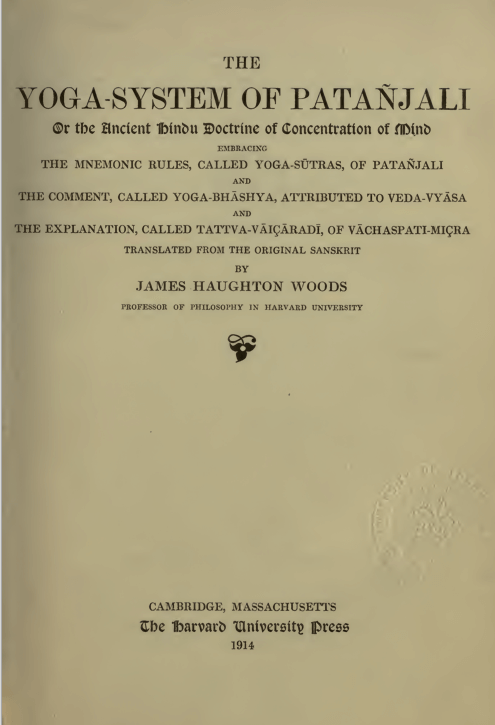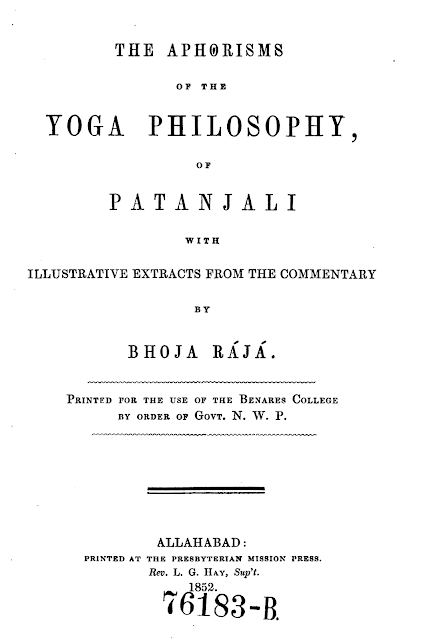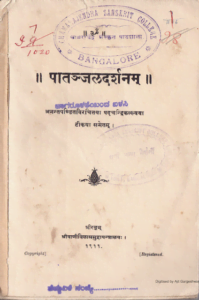Yoga Sutra of Patanjali
That is, not only "sutras" but also "yogis" in the plural in the title of the text, i.e. the Yoga Sutras is a collection of ideas from different yoga traditions. Therefore, the state to which the practitioner goes and the methodology for attaining it differs throughout the course of the text.
To form your own opinion about Yoga Sutras, you can use the various materials and researches we have collected on this page:
Table of nuances of the first five translations of the Yoga Sutras
The reasons for the complications in translating the definition of yoga in the Yoga Sutra:
Patanjali’s vritti (those “chitta-vritti-nirodha”) are cognitive distortions, and their control (nirodha) is the attainment of adequacy of perception. However, the term “cognitive distortions” itself is only 50 years old. Until then, there was no methodology that adequately described this range of phenomena. Accordingly, the first translators of the Yoga Sutras did not have the appropriate words and apparatus to translate the basic terms of yoga. This led to a number of distortions in the perception of the meanings of the Yoga Sutra, the consequences of which we see in popular ‘yoga’.Source.
| Ballentain 1852 | William Judge 1890 (Teosoph) | Dvivedi 1890 (Teosoph) | Ganganath 1907 | Jonson (Teosoph), 1912 | Woods, 1914 | |
| yoga | Concentration | Yoga or сoncentration | Yoga | Yoga | Union, spiritual consciousness | Yoga |
| drashtar | It (the Soul) | Spectator without a spectacle | Seer | Spectator | Seer | Seer |
| chitta | Internal organ or thinking principle, mind | thinking principle | thinking principle, mind | Internal organ | Psychic nature | Mind-stuff |
| kshipta, vikshipta | Distraction of mind | Attain concentration | Distraction of mind | Distraction | Interior consciousness | Restless, distracted |
| ekagra | Intentness on a single one | Intent upon single | Mind…into unity | Concentration of mind | One-pointedness | Single-in-intent |
| vritti | Modification | Modification | Transformation | Function | activates | Fluctuation |
| nirodha | Hindering | Hindering | Suppretion | Suppretion | Control | Restriction |
| samadhi | Meditation | Meditation | Meditation, full of light, Trance | Meditation | Meditation, spiritual or consciousness | Concentration |
| vairagya | Dispassion | Dispassion | Non-attachment | Dispassion (consciousness) | self indulgence | Passionless |
| pratyahara | Restraint | Restraint | Abstraction | Abstraction | Withdrawal | Withdrawal |
| dharana | Dharana (attention) | Attention | contemplation | Concentration | Withdrawal Attention | Fixed-attention |
| dhyana | contemplation | contemplation | Absorption | contemplation | contemplation | contemplation |
| ishvara | Lord | Ishvara | Ishvara | God | Master | Ishvara |
Blog 'The Yoga Sutra: A Commentary by a modern practitioner'
by Andrey Safronov
Sutra 1.2
Definitions of Yoga. Sutra 1-2
Sutra 1.2. Nirodha. The problem of emotional content of the practice
Sutra 1.2. Nirodha (continuation). The Problem of Motivation to Practice
Some Words on the Subject taken from Sandilya Upanishad
Sutra 1.2. Nirodha. The Problem of the Practice Boundedness
Sutras 1.17 – 1.18
Samprajna. The Legend of Asamprajna Samadhi
The Legend of Asamprajna Samadhi (continuation)
Fundamental Meaning of the Sloka 1.17. Correlation Between the Dimensions of Human Existence
Vairagya and Samprajna. The Logic of the Few Latest Slokas Arrangement
Meditation in the Context of Patanjali’s Yoga Sutras
Sutras 1.21 – 1.22
Sutras 1.27 – 1.28
Sutras 1.29 – 1.30
Sutras 1.32 – 1.36
Methods of chitta stabilization. Part one. Totalness
Methods of chitta stabilization. Part 2. Yogi’s “Virtues” of anahata nature
Meditation for overcoming hostility
Chitta-vikshepa and energetic ties
Breath control as a method of gathering chitta
Thoughtless brains beget evil ideas
Grand Thoughts and Reflections on abstract notions as a part of yoga
Sutra 1.37
Sutra 1.38
Sutra 1.39
About the creation and translations of the Yoga Sutras




